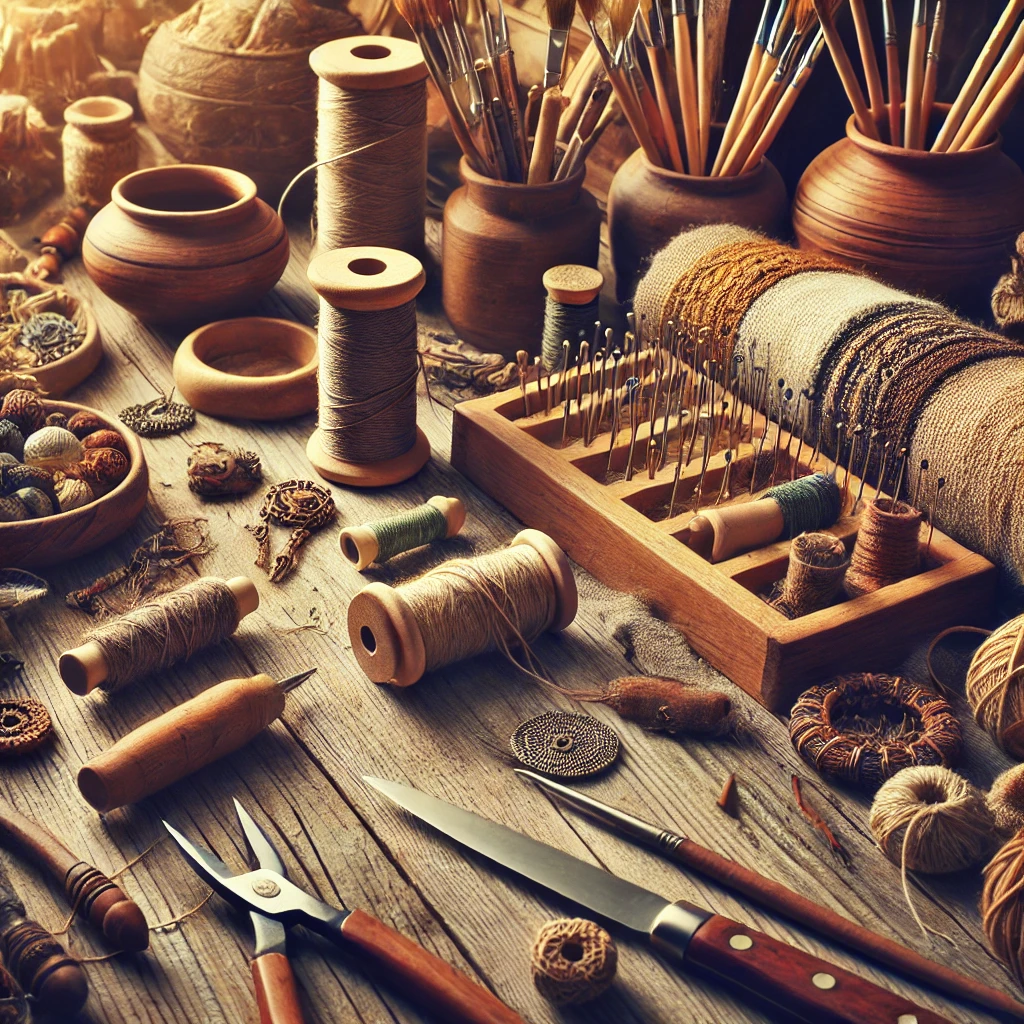News
The Rise of Handmade Goods: Why They’re More Popular Than Ever
In recent years, handmade goods have experienced a resurgence in popularity. From intricately crafted jewelry to bespoke home décor, handmade products are finding their way into homes, wardrobes, and lives of consumers worldwide. But what exactly has led to this renewed interest? Why are people increasingly opting for handmade goods over mass-produced alternatives? In this article, we’ll explore the driving forces behind the rise of handmade goods and explain why they’re more popular than ever.
1. Uniqueness and Personalization
One of the key reasons handmade goods are gaining popularity is their uniqueness. In a world saturated with mass-produced items, consumers are increasingly searching for products that set them apart from the crowd. Handmade goods often come with their own distinct characteristics, whether it’s a slight variation in color, design, or texture. These imperfections add to the charm and individuality of each piece, making them more special.
- Example: A handcrafted ceramic mug will often have minor differences in glaze or shape, unlike a factory-made mug where every piece is identical. These differences give the item personality, making it more appealing to those looking for something unique.
Beyond uniqueness, many handmade products offer a level of personalization that mass-produced goods simply cannot match. Customization options such as choosing materials, colors, or adding initials are commonly available when purchasing handmade products. Whether it’s a monogrammed leather wallet or a hand-painted piece of art, the ability to have something made just for you adds emotional value.
2. Higher Quality and Durability
Handmade goods are typically crafted with a level of care and attention to detail that mass-produced items cannot rival. When artisans take the time to create products, they often use higher quality materials and employ techniques that result in superior craftsmanship. These products are made to last, and many buyers appreciate the investment in a durable, long-lasting item over something that might wear out or break quickly.
- Example: Compare a handmade leather bag to one that’s mass-produced. The handmade bag, stitched with precision and attention to detail, will likely last for years and age beautifully over time, while a factory-made alternative may fall apart after a season.
Consumers today are more aware of the environmental and financial costs of throwaway culture. As a result, they’re choosing handmade products not only for their beauty but for their longevity. A product that stands the test of time is often worth the higher initial investment.
3. Sustainability and Eco-Friendliness
Sustainability has become a significant factor in consumer decision-making, and handmade products are often seen as a more eco-friendly alternative to mass-produced goods. Large-scale manufacturing can be harmful to the environment, relying on resource-intensive processes, significant energy consumption, and producing a vast amount of waste. In contrast, handmade goods are typically crafted in small batches or made to order, reducing waste and minimizing the environmental impact.
- Sustainable Materials: Many artisans are now opting to use sustainable, recycled, or organic materials. For example, a handmade jewelry maker might use ethically sourced gemstones, while a textile artist might work with organic cotton or recycled fabrics.
- Reduced Carbon Footprint: Since handmade goods are often produced locally, purchasing from artisans can also reduce the carbon footprint associated with shipping mass-produced goods across the globe. Additionally, many makers focus on environmentally friendly production processes, using less energy and fewer harmful chemicals than large factories.
This trend towards sustainable consumption aligns with the growing number of consumers who are prioritizing ethical and eco-conscious purchases, making handmade goods even more desirable.
4. Supporting Local Artisans and Small Businesses
A significant reason behind the popularity of handmade goods is the desire to support local artisans and small businesses. Buying handmade is a conscious decision to contribute to the local economy, helping artisans maintain their craft and sustain their livelihoods. This desire to shop locally is particularly strong in the wake of the COVID-19 pandemic, which heightened awareness about the importance of supporting small, independent businesses.
When consumers purchase handmade goods, they often feel a personal connection to the maker. This connection fosters a sense of community and belonging. Many artisans share the stories behind their products, allowing buyers to understand the process and passion that goes into each creation. This sense of transparency and authenticity is something consumers crave in an era of impersonal, mass-produced goods.
5. The Return to Craftsmanship and Tradition
Another reason for the rise of handmade goods is the growing appreciation for craftsmanship and traditional skills. As technology continues to dominate modern life, there has been a cultural shift towards embracing slower, more deliberate practices. Handmade products often represent time-honored techniques that have been passed down through generations, from woodworking and pottery to weaving and embroidery.
- Example: In countries such as Japan, traditional crafts like kintsugi (the art of repairing broken pottery with gold) or sashiko (a form of decorative stitching) have experienced a resurgence in both domestic and international markets.
This return to craftsmanship is about more than just aesthetics—it’s about preserving cultural heritage and supporting artisans who have dedicated their lives to perfecting these skills. Consumers are becoming more aware of the value of these practices and are willing to invest in products that honor this rich history of craftsmanship.
6. The Experience of Buying Handmade
Purchasing a handmade item offers a unique and often enjoyable shopping experience. Whether it’s browsing a local craft market, visiting an artisan’s workshop, or scrolling through an online platform like Etsy, the process of discovering handmade products can be exciting and rewarding. Consumers enjoy learning about the story behind the products and engaging with the maker directly. Many people value the human connection that is often missing in transactions involving mass-produced items.
In addition, handmade items often come with a sense of exclusivity. Since many artisans produce limited quantities or one-of-a-kind pieces, owning a handmade product can feel like owning a special piece of art or craftsmanship that few others possess. This contributes to a sense of pride and satisfaction for the buyer.
7. The Impact of Social Media and Online Platforms
The digital age has played a crucial role in the rise of handmade goods. Social media platforms like Instagram and Pinterest have allowed artisans to showcase their work to a global audience, while e-commerce platforms such as Etsy, Shopify, and Amazon Handmade have made it easier than ever for consumers to discover and purchase handmade products. The visual nature of these platforms allows artisans to display their creations in stunning detail, often leading to viral success stories where a maker’s products sell out in minutes after being shared online.
These platforms have leveled the playing field, allowing independent artisans to compete with larger companies by reaching a broader audience without the need for a brick-and-mortar store. The result is a vibrant marketplace where handmade goods are accessible to consumers around the world.
Conclusion
The rise of handmade goods reflects a broader shift in consumer preferences toward uniqueness, sustainability, and quality. In an age where mass production dominates, more people are turning to handmade products for their individuality, durability, and the personal connection they offer. With the continued growth of online platforms and the increasing emphasis on supporting small businesses and ethical consumption, it’s clear that handmade goods are not just a passing trend but a lasting movement.
As consumers continue to seek out products that are meaningful, eco-friendly, and made with care, the popularity of handmade goods is only set to rise further.

